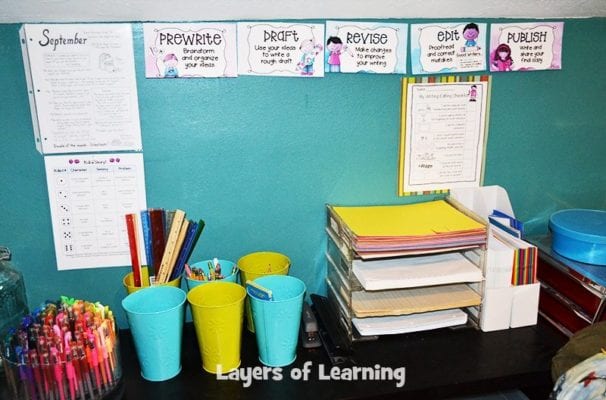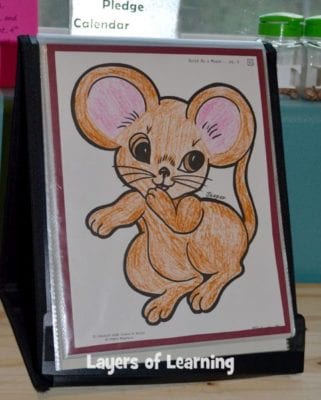Public school is tailored quite well for extroverts, but homeschool can provide a unique challenge for an extroverted kid. Extroverts get energy from people, so being home and quietly tending to the tasks of schoolwork can feel draining for an extrovert. While your introverted child will sit quietly with a book, doing research, and writing thoughts out, your extrovert will likely struggle with the monotony of these quiet tasks. They’ll likely long for the social life of public school.

My husband is an extreme extrovert. Me? An ambivert – smack dab in the middle of the introvert/extrovert spectrum. I have two extroverted kids and two ambiverts like me. My particular flavor of ambivert is that I like having a changing, stimulating environment, thrive in discussions, and enjoy group gatherings, but I also crave calm, peaceful, alone time and have an intense need for things to be organized and in their places. Sitting in a quiet, dim room with my thoughts is my ultimate happy place, but I eventually feel the need for noise and companionship again. No one is completely defined by the extrovert/introvert spectrum; after all, we have complex personalities with unique life experiences and insights.
What is an Extrovert?
An extrovert gains energy through interaction with people. Being in a crowd or group makes them feel alive, alert, and happy. They crave a stimulating, changing environment. Color, noise, and talking are hallmarks of happiness for an extrovert.

Leadership is a quality common to extroverts, though not all extroverts are good leaders. By nature though, they tend to value the interaction of a group, love discussion, and thrive with group interaction.
Extroverted people can learn to do quiet, thoughtful tasks, but they will not feel truly content with these. They will cope with them, complete what they need to, and then get back to the business of being with others as quickly as possible to feel rejuvenated once again.
An Extroverted Study Space
I recently visited my brother’s office where he works on a floor of computer programmers. There were rows of desks with fancy glass partitions. Sleek, clean computers were on the desks, but not a family picture to be seen anywhere. No décor, no color (if you don’t count shades of black, grey, and transparent glass), no personal items. They didn’t even have printers, because, as my brother explained, “what would be the point of printing anything? Just look at it on your screen.” Adjacent to this office was the HR department – rows of desks with glass partitions cluttered with family photos, bright calendars, little houseplants, and scrawled post-it note reminders adorning the desks. The point is, let your kid control his own work space. What feeds one, does not feed all.

Study Space
Homeschooling an extrovert means your child will probably need more variety in his or her study space. Color, stimulating charts and pictures on the wall, and music will likely be important. The study space of an extrovert should be stimulating. He may learn as much by what’s plastered on the walls as he does by what is in the book he was asked to read. Provide music during school time. Keep stress balls, silly putty, beanbags, balls, and manipulatives on hand for learning activities.

Extroverts AND Introverts In One room, OH, MY!
If you have a combination of introverts and extroverts, this can be a particular challenge as introverts need the peacefulness of a quiet and clean, less stimulating work space. One thing we’ve done is give each kid their own individual desk space as well as create some group learning areas. Every kid also has headphones so they can choose to hear music or block out noise as they study.

This can be a lot harder when you don’t have a dedicated homeschool room. I know, because I went many years without one. I let this same principle infiltrate other parts of our homeschool experience though. One of my son’s uses an electronic planner while other kids prefer the printed paper one they can put stickers all over as they finish their work. Some of my kids have one big binder where they keep all their school work, but one son prefers to just keep an e-version of important work. I also created a desk space in his bedroom so he can escape us all entirely when he needs to do his work completely on his own.

Stretching the Extrovert
Societally, we tend to highly value extroverted personalities in general, but there are also some key qualities of natural introverts that extroverts can and should learn. Make an effort to teach them that there are times we must be quiet. Expect short bits of study time for independent learning. Incorporate thoughtful reading and writing experiences. Train them in ways to focus their minds, like visualizing a picture of what they are reading about, or making a list of what they will do in a project before jumping into the project. Extroverts tend to think BY talking instead of thinking BEFORE talking. Teach them to think things through before a discussion, and maybe even write out their thoughts before just saying them. You may even have to remind them constantly not to interrupt.
Homeschooling an Extrovert
Variety
Vary the kinds of lessons you have. I can’t ask my kids to have a “sit and read and research and write” kind of a day without breaking it up with activities, projects, and discussions. Likewise, I can’t plan a day full of fun activities without giving us some quiet, introspective breaks to rejuvenate those who need it.
Outings
Extroverts will also enjoy co-op experiences, clubs, sports teams, and music lessons. Go to library programs. Seek out group field trip opportunities. Enjoy park days. Invite others over for a book club discussion, to put on a play together, or just to hang out and eat pizza. Ask other homeschoolers to join you for an outing and make plans to have holiday parties. To extroverts, this is like recharging their batteries.

Visual and Auditory Stimulation
Provide visual stimulation (colorful posters, charts, and pictures of what you’re learning). Play music and put information to be learned to music. Surprise them with new decorations every so often. Give them a colorful, visible, paper planner.

Provide visual behavior cues. Signs, hand signals, or lights turned down a bit provide reminders not to interact and talk during quiet work times.

Let them move and interact while memorizing.
Stretch them by expecting independent work and quiet reflection as well.
Help them recharge by incorporating interaction and social time.
An Important Note For Parents Of Homeschooled Extroverts
Final note to Mom or Dad – an extrovert may express a desire to go to public school. Don’t let this make you feel like a failure. This doesn’t mean you aren’t being a good parent or that you just can’t do this homeschooling thing. It simply means that your extrovert is a people person and wants to be with friends. Don’t let it feel like a reflection on you when it is actually just a reflection of your extrovert’s own personality shining through.
We all have different reasons for homeschooling, so you will need to decide what this means for you when it comes up. Some families choose to allow their extroverted kids to thrive in the social environment of school. Dual enrollment with the kid attending P.S. part time is another option. Or you may be resolutely against the idea of sending your kids to school for any reason. You will need to decide where you stand and then STAND. Be okay with your decisions, because no matter what you decide, there will always be someone there to tell you you’re doing it wrong. Hear your inner voice louder than all those other voices. You can help your child thrive in any setting if you are in tune with their needs.
Library List
Here are some books we recommend for those of you have extroverted kids or aren’t sure what you’ve got.
More From Layers of Learning
Check out the companion article: Homeschooling an Introvert. It provides a pretty insightful contrast and will help you understand even more about how to teach differently for introverts versus extroverts. Then go check out our Homeschooling Helps page for more teaching tips and insights.
Get a Free Unit
Choose between the first unit in each Layers of Learning subject to try for free when you sign up for the newsletter.
We never spam and you can cancel your subscription at any time.









Can you share what you use when the mouse for quiet time goes away? Is there another visual you have?
I don’t have another visual. The mouse is either hanging up, or he’s put away. Seeing him just reminds my visual kids of what they should be doing – working quietly instead of interacting.